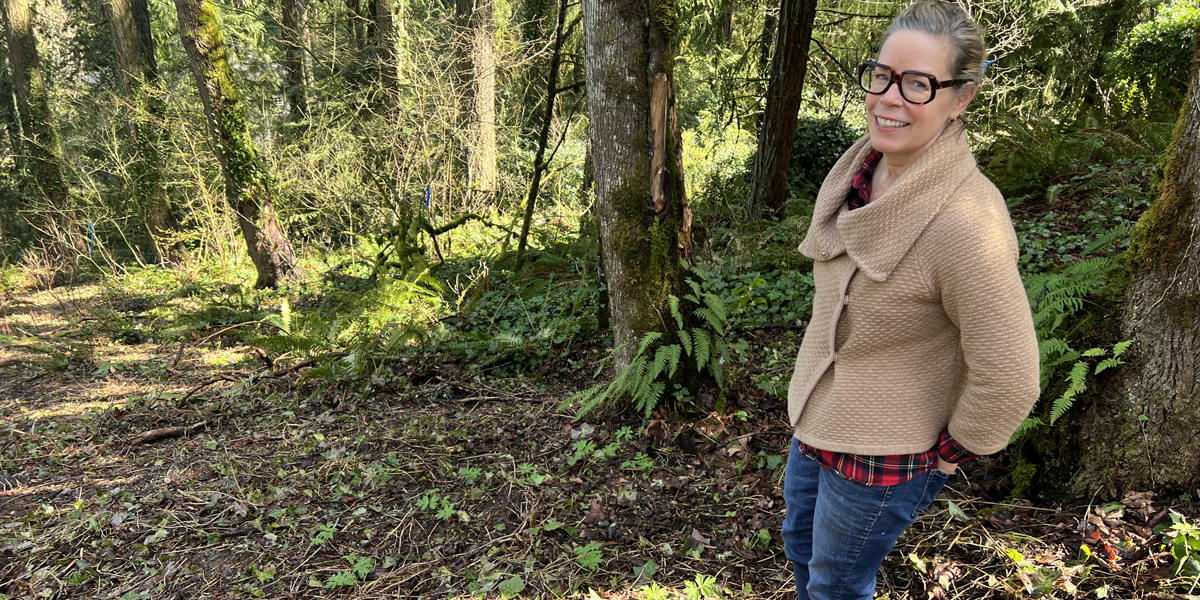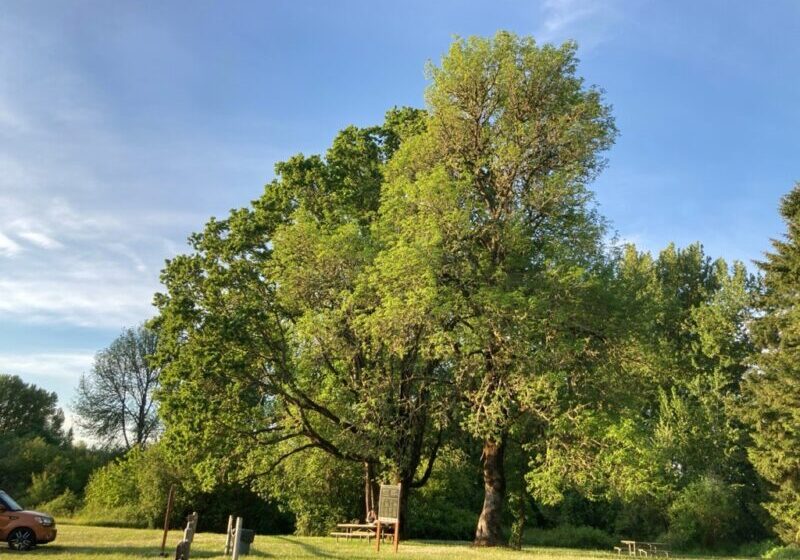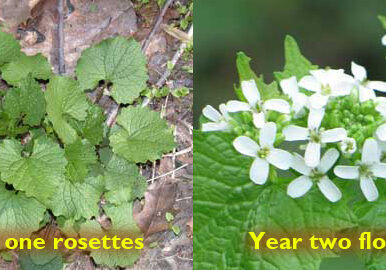(Photo: Sarah Heinicke is leading the charge for her neighborhood to be more wildfire resilient.)
The Springville area of Forest Park, in the Linnton neighborhood, is a small community of hilly streets tucked up against the eastern edge of Forest Park, across from the St. Johns Bridge. For several of the residents directly abutting the park, it’s impossible to tell just by looking where their properties end and where Forest Park begins. What is clearly visible, however, is the blanket of ivy vines covering the ground in thick entangled layers and growing up the trunks of many of the trees.
English ivy (Hedera helix) and its cousin Irish ivy (Hedera hibernica) are native to Europe and western Asia and were brought over by colonial settlers. The plants thrive in our mild Pacific Northwest climate and without anything to keep them in check they have become a significant threat to natural areas. They cover the ground, crowding out native flowers, ferns, small shrubs, and tree seedlings, leaving behind a dense monocultureMonoculture A single type of plant growing in an area. that offers little to no habitat for native wildlife. The vines are also a significant threat to trees. Once a vine reaches the tree canopy, it will grow into a large twisted mass dense enough to block sunlight from reaching tree leaves, eventually weakening infested trees and increasing the risk of tree bark disease and rot. The vine mass can also be heavy enough or large enough to create a “sail effect” that could make a tree more likely to blow over in a strong wind.
Sarah Heinicke, a longtime resident of the neighborhood, spearheaded a community effort to remove ivy and other threatening non-native plants from neighborhood properties. Sarah doesn’t like to see ivy slowly consuming the forest around her and she knows it will take a coordinated effort to see real results across neighboring properties.
Being so close to a forest, Sarah and her neighbors are also aware of the risk of wildfire. Sarah reached out to West Multnomah Soil & Water Conservation District to see if there was funding available to help remove ivy and create a visible Firewise pilot project that would inspire more neighbors to get involved.
Forest Park Conservancy and West Multnomah Soil & Water Conservation District have worked together for years on the Canopy Weeds Program to remove ivy and Old Man’s Beard/Traveler’s Joy (Clematis vitalba) from private properties that share a boundary with Forest Park. This project was a perfect fit for both the Canopy Weeds Program and the Firewise program, where residents could learn how to make their homes safer from wildfire by creating defensible space around homes and removing ladder fuels – burnable organic matter on the forest floor that allows fire to climb up into the tree canopy – like ivy.
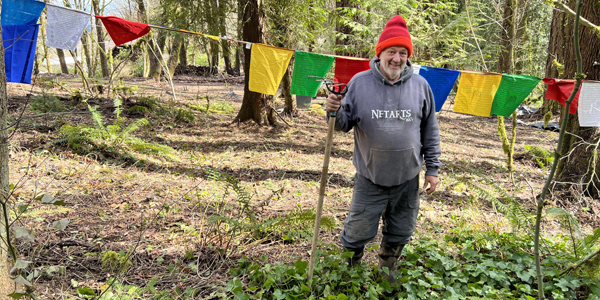
Individually, some neighbors had already been making progress clearing ivy patches on their own. Dan Sisco is one active participant in ivy removal. He regularly spends hours pulling ivy from his property and sees much benefit in doing so, both for the forest’s health and for his own health. He’s eager to recruit volunteers who happen to be passing by for a hike, and has a clever pitch for people who exercise indoors. “Forget Peloton, they should try ‘Pull-a-ton!’ ” And Dan’s efforts are already paying off. He has found solace and inspiration in the fresh air and hard work, and trillium and other native plants are popping back up in spots he has cleared.
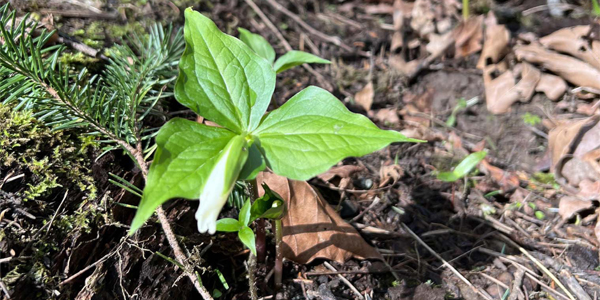
For this pilot project, our partnering organizations are providing crews to remove ivy and other priority non-native plants, installing native plants, and developing conservation plans for long-term management to help prevent the ivy from returning. Portland Fire & Rescue is part of the pilot team providing home assessments and offering ideas for evacuation plans and actions residents can take to reduce wildfire risk to their homes. Homes that are Being in close proximity to the park are at increased risk of destruction by wildfire. All the partner organizations, plus Portland Parks & Recreation, have been key to developing and delivering impactful outreach materials for the pilot. Portland Parks & Recreation is also complimenting efforts with Federal Emergency Management Agency (FEMA) supported funding to conduct wildfire risk reduction work in high-priority areas in Forest Park near the Linnton and Springville neighborhoods.
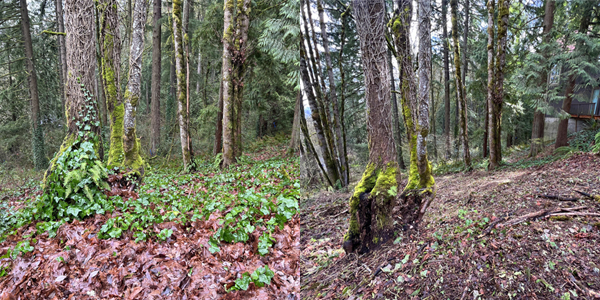
Work crews completed the first large ivy removal in February of this year. They cleared ivy from tree trunks and the ground in an area where the work is visible to the neighborhood. Next up for the project will be outreach to 90 more homes to inform them about the pilot and what people can do to reduce fire risk on their properties. Our partners hope to organize additional projects as groups of neighbors express interest. Sarah is hoping more neighbors with gather around the community effort and work alongside each other at future work events.
Learn more about ivy and what to do if you have some in your yard. Also, if you don’t have ivy where you live, consider volunteering for the No Ivy League to help remove ivy from Forest Park.
